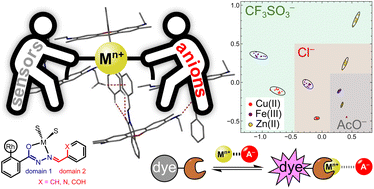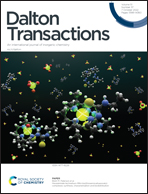The effect of outer-sphere anions on the spectroscopic response of metal-binding chemosensors†
Abstract
Ion pair receptors typically contain two separate binding sites, for the metal and the anion respectively. Here we report a less synthetically demanding approach, whereby we prepared a family of ion pair sensors based on a rhodamine fluorescent scaffold containing a tunable cation binding motif. When exposed to ion pairs, a competition for the metal ion is established between these ligands and anions. Structural and spectroscopic evidence showed that anions bind through weaker secondary interactions in the metal's outer coordination sphere and their presence influences the optical spectroscopic properties of the coordination complex in distinctive ways. The relationship between the binding site's metal affinity and its tunable properties, and the sensors’ discriminatory power for anions was explained as a function of the metal ion's binding preferences. These effects were also exploited to discriminate cations and anions concurrently through multivariate data analysis methods.



 Please wait while we load your content...
Please wait while we load your content...
